Amazon Web Services:

Amazon Web Services provides a highly reliable, scalable, low-cost infrastructure platform in the cloud that powers hundreds of thousands of businesses in 190 countries around the world. With data center locations in the U.S., Europe, Brazil, Singapore, Japan, and Australia, customers across all industries are taking advantage of the following benefits:
1) low cost: AWS offers low, pay-as-you-go pricing with no up-front expenses or long-term commitments. AWS is able to build and manage a global infrastructure at scale and pass the cost saving benefits in the form of lower prices.
2) Agility and Instant Elasticity: AWS provides a massive global cloud infrastructure that allows one to quickly innovate, experiment and iterate. Instead of waiting weeks or months for hardware, one can instantly deploy new applications, instantly scale up as workload grows, and instantly scale down based on demand.
3) Open and Flexible: AWS is a language and operating system agnostic platform. one choose the development platform or programming model that makes the most sense for business. one can choose which services to use, one or several, and choose how to use them. This flexibility allows you to focus on innovation, not infrastructure.
4) Secure: AWS is a secure, durable technology platform with industry-recognized certifications and audits: PCI DSS Level 1, ISO 27001, FISMA Moderate, FedRAMP, HIPAA, and SOC 1 (formerly referred to as SAS 70 and/or SSAE 16) and SOC 2 audit reports. Our services and data centers have multiple layers of operational and physical security to ensure the integrity and safety of your data.
Important services provided by AWS:
1) Amazon Elastic Compute Cloud:
EC2 stands for Amazon Elastic Compute Cloud.
Amazon EC2 is a web service that provides resizable compute capacity in the cloud.
Amazon EC2 delivers secure, reliable, high-performance, and cost-effective compute infrastructure to meet demanding business needs. Access the on-demand infrastructure and capacity you need to run HPC applications faster and cost-effectively.
Access environments in minutes, dynamically scale capacity as needed, and benefit from AWS’s pay-as-you-go pricing. Amazon EC2 delivers the broadest choice of compute, networking (up to 400 Gbps), and storage services purpose-built to optimize price performance for ML projects.
Use cases:
Customers: Finra and VOlkswagen group
2) Amazon Relational Database Services:
Amazon Relational Database Service (RDS) is a managed SQL database service provided by Amazon Web Services (AWS). Amazon RDS supports an array of database engines to store and organize data. It also helps in relational database management tasks like data migration, backup, recovery and patching.
Amazon RDS facilitates the deployment and maintenance of relational databases in the cloud. Cloud administrators use Amazon RDS to set up, operate, manage, and scale relational instances of cloud databases. Amazon RDS itself is not a database; It is a service used to manage relational databases.
Amazon Relational Database Service RDS is a managed relational database service that provides you six familiar database engines to choose from, including Amazon Aurora, MySQL, MariaDB, PostgreSQL, Oracle, and Microsoft SQL Server. This means that the code, applications, and tools you already use today with your existing databases can be used with Amazon RDS. Amazon RDS handles routine database tasks, such as provisioning, patching, backup, recovery, failure detection, and repair.
CUstomers: Mint and Samsung
3) Amazon Simple storage Service:
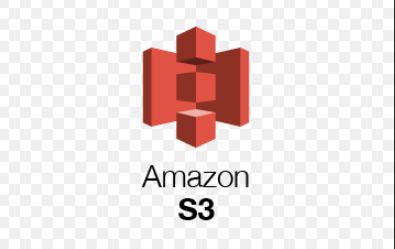
->Amazon S3 is a simple key-based object store. When you store data, you assign a unique object key that can later be used to retrieve the data. Keys can be any string, and they can be constructed to mimic hierarchical attributes. Alternatively, you can use S3 Object Tagging to organize your data across all of your S3 buckets and/or prefixes.
Customers: Georgia- Pacific, Zalando
4) Amazon Lambda: AWS Lambda is a serverless, event-driven compute service that lets you run code for virtually any type of application or backend service without provisioning or managing servers. Automatically respond to code execution requests at any scale, from a dozen events per day to hundreds of thousands per second. Save costs by paying only for the compute time you use—by per-millisecond—instead of provisioning infrastructure upfront for peak capacity. Optimize code execution time and performance with the right function memory size. Respond to high demand in double-digit milliseconds with Provisioned Concurrency.
-> Each AWS Lambda function runs in its own isolated environment, with its own resources and file system view. AWS Lambda uses the same techniques as Amazon EC2 to provide security and separation at the infrastructure and execution levels.
-> AWS Lambda stores code in Amazon S3 and encrypts it at rest. AWS Lambda performs additional integrity checks while your code is in use.
Customers: Nielsen, coco cola company
5) Amazon Glacier: AWS Glacier, is the backup and archival storage provided by AWS. It is an extremely low cost, long term, durable, secure storage service that is ideal for backups and archival needs. In a lot of its operation AWS Glacier is similar to S3, and, it interacts directly with S3, using S3-lifecycle policies.
-> The main difference between AWS S3 and Glacier is the cost structure. The cost of storing the same amount of data in AWS Glacier is significantly less as compared to S3. Storage costs in Glacier can be as little as $1 for one petabyte of data per month
Features of AWS Glacier
-> Given the extremely cheap storage, provided by AWS Glacier, it doesn’t provide as many features as AWS S3. Access to data in AWS Glacier is an extremely slow process.
Just like S3, AWS Glacier can essentially store all kinds of data types and objects.
-> Durability: AWS Glacier, just like Amazon S3, claims to have a 99.9999999% of durability (11 9’s). This means the possibility of losing your data stored in one of these services one in a billion. AWS Glacier replicates data across multiple Availability Zones for providing high durability.
-> Data Retrieval Time: Data retrieval from AWS Glacier can be as fast as 1-5 minutes (high-cost retrieval) to 5-12 hours (cheap data retrieval).
-> AWS Glacier Console: The AWS Glacier dashboard is not as intuitive and friendly as AWS S3. The Glacier console can only be used to create vaults. Data transfer to and from AWS Glacier can only be done via some kind of code. This functionality is provided via:
AWS Glacier API
AWS SDKs
-> Region-specific costs: The cost of storing data in AWS Glacier varies from region to region.
-> Security: AWS Glacier automatically encrypts your data using the AES-256 algorithm and manages its keys for you.
Apart from normal IAM controls AWS Glacier also has resource policies (vault access policies and vault lock policies) that can be used to manage access to your Glacier vaults.
-> Infinite Storage Capacity: Virtually AWS Glacier is supposed to have infinite storage capacity.
Customers: QUBE, BANDLAB
6) Amazon Simple Notification Service:

It provides developers with a highly scalable, flexible, and cost-effective capability to publish messages from an application and immediately deliver them to subscribers or other applications.
It is designed to make web-scale computing easier for developers. It is designed to make web-scale computing easier for developers.
Benefits of amazon SNS:
. Instantaneous, push-based delivery (no polling)
. Simple APIs and easy integration with applications
. Flexible message delivery over multiple transport protocols
. Inexpensive, pay-as-you-go model with no up-front costs
. Web-based AWS Management Console offers the simplicity of a point-and-click interface
Amazon Simple Notification Service (SNS) sends notifications two ways, A2A and A2P. A2A provides high-throughput, push-based, many-to-many messaging between distributed systems, microservices, and event-driven server less applications. These applications include Amazon Simple Queue Service (SQS), Amazon Kinesis Data Firehose, AWS Lambda, and other HTTPS endpoints. A2P functionality lets you send messages to your customers with SMS texts, push notifications, and email. Simplify your architecture an reduce costs with message filtering, batching, ordering and deduplication. Increase message duration with archiving, delivery retires and dead letter queues.
Customers: Change Health Care, NASA
7) Amazon Virtual Private Cloud (VPC):
Amazon VPC or Amazon Virtual Private Cloud is nothing but a service that allows its users to launch their virtual machines in a protected as well as isolated virtual environment defined by them. Amazon Virtual Private Cloud (Amazon VPC) gives you full control over your virtual networking environment, including resource placement, connectivity, and security. Spend less time setting up, managing, and validating your virtual network. Customize your virtual network by choosing your own IP address range, creating subnets, and configuring route tables.
It’s applicable to organizations where the data is scattered and needs to be managed well.
Amazon VPC comprises a variety of objects that will be familiar to customers with existing networks:
Components of Amazon VPC:
- A Virtual Private Cloud: A logically isolated virtual network in the AWS cloud. You define a VPC’s IP address space from ranges you select.
- Subnet: A segment of a VPC’s IP address range where you can place groups of isolated resources.
- Internet Gateway: The Amazon VPC side of a connection to the public Internet.
- NAT Gateway: A highly available, managed Network Address Translation (NAT) service for your resources in a private subnet to access the Internet.
- Virtual private gateway: The Amazon VPC side of a VPN connection.
- Peering Connection: A peering connection enables you to route traffic via private IP addresses between two peered VPCs.
- VPC Endpoints: Enables private connectivity to services hosted in AWS, from within your VPC without using an Internet Gateway, VPN, Network Address Translation (NAT) devices, or firewall proxies.
-
Egress-only Internet Gateway: A stateful gateway to provide egress only access for IPv6 traffic from the VPC to the Internet.
Customers: TABLEAU, ATLASSIAN
8) Amazon Kinesis:
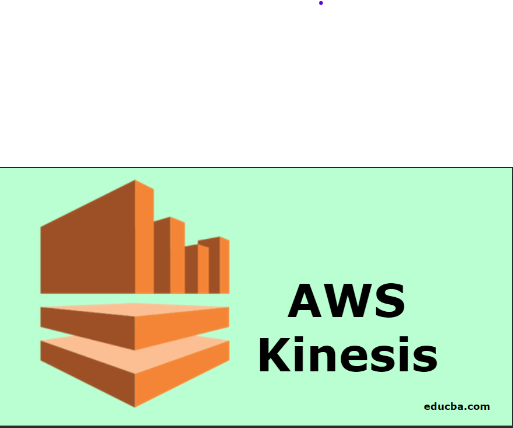
Amazon Kinesis is a service provided by Amazon Web Service which allows users to process a large amount of data (which can be audio, video, application logs, website clickstreams, and IoT telemetr)per second in real-time.
Amazon Kinesis makes it easy to collect, process, and analyze real-time, streaming data so you can get timely insights and react quickly to new information.
Amazon Kinesis offers key capabilities to cost-effectively process streaming data at any scale, along with the flexibility to choose the tools that best suit the requirements of your application.
Amazon Kinesis enables you to process and analyze data as it arrives and respond instantly instead of having to wait until all your data is collected before the processing can begin.
Features of Amazon Kinesis
- Cost-efficient: All the services provided by the amazon are cost-efficient as it follows the pay as you go model which means you have to pay for the service according to the usage, not a flat price. So it becomes advantageous for the user s that they have to pay only what they use.
- Integrate with other AWS services: Amazon Kinesis allows users to use the other AWS services and integrate with it. Services that can be integrated are Amazon DynamoDB, Amazon Redshift, and all the other services that deal with the large amount of data.
- Availability: You can access it from anywhere and anytime. Just need a good connectivity of net.
- Real-time processing- It allows you to work upon the data which is needed to be updated every time with changes instantaneously. Most advantageous feature of Kinesis because real-time processing becomes important when you are dealing with such a huge amount of data. Limits of Amazon Kinesis: . The limitation that Amazon kinesis has that it only access the stream of records log for 24 hours by default but it can extend but up to only 7 days not longer than that. . There is no upper limit in the number of streams that can users have in their accounts. . One shard supports up to 1000 PUT records per second. Customers: Zillow, Netflix
9) Amazon Auto- Scaling:

10) Amazon Identity Access Management (IAM): With AWS Identity and Access Management (IAM), you can specify who or what can access services and resources in AWS, centrally manage fine-grained permissions, and analyze access to refine permissions across AWS.
-> With AWS Identity and Access Management (IAM), you can specify who or what can access services and resources in AWS, centrally manage fine-grained permissions, and analyze access to refine permissions across AWS. Continually analyze access to right-size permissions on the journey to least privilege.
customers: DOW JONES, JMT
11) Amazon simple Queue Service: Amazon Simple Queue Service (SQS) lets you send, store, and receive messages between software components at any volume, without losing messages or requiring other services to be available.
-> Eliminate overhead with no upfront costs and without needing to manage software or maintain infrastructure. Reliably deliver large volumes of data, at any level of throughput, without losing messages or needing other services to be available.
-> Securely send sensitive data between applications and centrally manage your keys using AWS Key Management.
-> Scale elastically and cost-effectively based on usage, so you don’t have to worry about capacity planning and reprovisioning.
Features of SQS:
-> Increase application reliability and scale.
-> Decouple microservices and process event-driven applications.
-> Ensure work is completed cost-effectively and on time.
-> Maintain message ordering with deduplication.
Customers: BMW, CAPITAL ONE
12) Amazon ElastiCache: Amazon Elasti Cache is a fully managed, in-memory caching service supporting flexible, real-time use cases. You can use Elasti Cache for caching, which accelerates application and database performance, or as a primary data store for use cases that don't require durability like session stores, gaming leaderboards, streaming, and analytics. Elasti Cache is compatible with Redis and Memcached. Scale with just a few clicks to meet the needs of your most demanding, internet-scale applications. Reduce costs and eliminate the operational overhead of self-managed caching.
Features of Elasticache:
-> Access data with microsecond latency and high throughput for lightning-fast application performance.
-> Cache your data to reduce pressure on your backend database, enabling higher application scalability and reducing operational burden.
-> Use ElastiCache to store non-durable datasets in memory and support real-time applications with microsecond latency.
Customers: The Pokemon Company, Tinder
13) Amazon Sagemaker: SageMaker is a full-fledged management service providing developers and data scientists with the resources to build, train, and deploy machine learning models rapidly. Use it to create highly scalable machine learning models that deploy products faster and deliver to market quickly. Access, label, and process large amounts of structured data (tabular data) and unstructured data (photo, video, geospatial, and audio) for ML. Reduce training time from hours to minutes with optimized infrastructure. Boost team productivity up to 10 times with purpose-built tools.
Customers: Pytorch, Tensorflow
14) Amazon Lightsail: Amazon Lightsail offers easy-to-use virtual private server (VPS) instances, containers, storage, databases, and more at a cost-effective monthly price. Automatically configure networking, access, and security environments. Easily scale as you grow—or migrate your resources to the broader AWS ecosystem, such as Amazon EC2. Leverage the security and reliability of the world’s leading cloud platform.
-> A Lightsail instance is a virtual private server (VPS) that lives in the AWS Cloud. Using Lightsail instances one can store data, run code, and build web-based applications or websites. Instances can connect to each other and to other AWS resources through both public (Internet) and private (VPC) networking. One can create, manage, and connect easily to instances right from the Lightsail console.
Customer: Accentric, Gourmeal
15) Amazon Elastic File System (EFS):

-> Amazon EFS provides performance for a broad spectrum of workloads and applications: big data and analytics, media processing workflows, content management, web serving, and home directories.
-> Amazon EFS Standard storage classes are ideal for workloads that require the highest levels of durability and availability.
Use cases:
-> Share code and other files in a secure, organized way to increase DevOps agility and respond faster to customer feedback.
-> Persist and share data from your AWS containers and serverless applications with zero
management required.
-> Simplify persistent storage for modern content management system (CMS) workloads.
-> Easier to use and scale, Amazon EFS offers the performance and consistency needed for machine learning (ML) and big data analytics workloads.
Customers: Johnson and johnson, Discover
16) Amazon Cloud Watch:

Customers: Pushpay, Mapbox
17) Amazon Cloud Directory: Amazon Cloud Directory enables you to build flexible cloud-native directories for organizing hierarchies of data along multiple dimensions. With Cloud Directory, you can create directories for a variety of use cases, such as organizational charts, course catalogs, and device registries. While traditional directory solutions, such as Active Directory Lightweight Directory Services (AD LDS) and other LDAP-based directories, limit you to a single hierarchy, Cloud Directory offers you the flexibility to create directories with hierarchies that span multiple dimensions. For example, you can create an organizational chart that can be navigated through separate hierarchies for reporting structure, location, and cost center. Cloud Directory eliminates time-consuming and expensive administrative tasks, such as scaling infrastructure and managing servers.
18) Amazon Cognito:

Customers: NHS Digital,Trade Micro
19) Amazon Elastic Beanstalk:

features:
-> Deploy scalable web applications in minutes without the complexity of provisioning and managing underlying infrastructure.
-> Use your favorite programming language to build mobile API backends, and Elastic Beanstalk will manage patches and updates.
-> Migrate stateful applications off legacy infrastructure to Elastic Beanstalk and connect securely to your private network.
20) Amazon DynamoDB:

-> Build internet-scale applications supporting user-content metadata and caches that require high concurrency and connections for millions of users and millions of requests per second.
-> Scale throughput and concurrency for media and entertainment workloads such as real-time video streaming and interactive content and deliver lower latency with multi-Region replication across AWS Regions.
-> Use design patterns for deploying shopping carts, workflow engines, inventory tracking, and customer profiles. DynamoDB supports high-traffic, extreme-scaled events and can handle millions of queries per second.
-> Focus on driving innovation with no operational overhead. Build out your game platform with player data, session history, and leaderboards for millions of concurrent users.
Customers: Disney, Dropbox, zoom
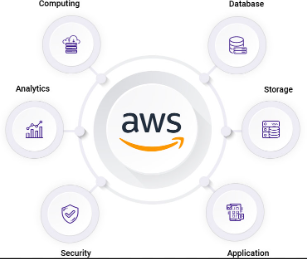

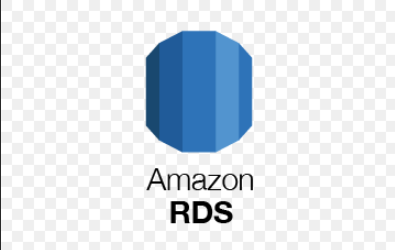
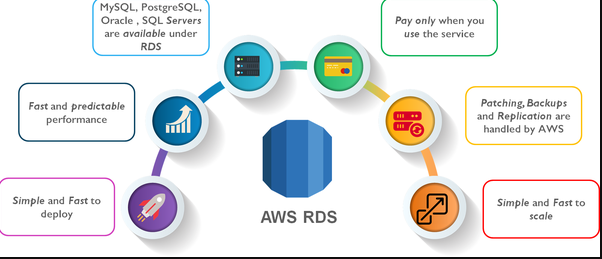



Top comments (0)